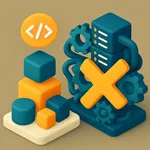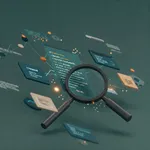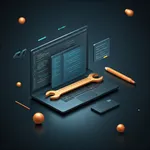Development Practices
Proven methodologies for delivering high-quality software through pragmatic engineering approaches.
Avoiding Over-engineering
and Unnecessary Dependencies
Every piece of software we create begins with a simple goal: to solve a problem. Yet, somewhere between the initial idea and the final commit, complexity often creeps in. We anticipate future needs that never arrive, incorporate libraries for problems we don't have, and build elaborate architectures for straightforward tasks. This journey away from simplicity usually starts with good intentions but leads to fragile, hard-to-maintain systems. In this article, I'll walk through the core principles that help me stay on track, from defining clear problem contexts to making small, tangible steps and critically evaluating every dependency. It’s a plea for building what matters and avoiding the 'arrogance tax' of over-engineering.
Why a Single Monitor Boosts Focus and Productivity
In software development, we champion simplicity and minimalism in our code, yet our physical workspaces often tell a different story. Like many, I was convinced that more screen real estate was synonymous with higher productivity. My journey from a single laptop to a sprawling three-monitor setup, complete with a vertical screen, was driven by that very belief. But I discovered that more space often just means more room for distraction. This is my reflection on choosing focus over frenzy and why I ultimately returned to the clarity of a single screen.
Using AI as a Pair Programming Partner in Development
The integration of AI into the daily workflow of a developer is more than a trend; it's a fundamental shift in how we approach problem-solving. Rather than replacing human intellect, the true power of these tools is unlocked when they act as a collaborative partner. In my own practice, I’ve established a simple but crucial rule: I only delegate tasks I am fully capable of doing myself. This ensures I maintain expertise and make informed final decisions. This article delves into the specific, practical ways I leverage AI for everything from high-level design discussions to tedious refactoring, treating it as a virtual pair programmer that enhances my capabilities without overriding my judgment.
Reclaiming Pragmatism
in Software Development
Lately, I’ve noticed a troubling trend in our industry. The term ’pragmatism’ has been co-opted, twisted into a justification for cutting corners and shipping subpar code. It’s now used as a synonym for ’quick and dirty’, casting a long shadow over what should be a core principle of good engineering. But I believe we’ve lost the plot. The real meaning of pragmatism is something far more powerful and intentional. It’s not about ignoring best practices; it’s about deeply understanding them so you know when and how to mindfully bend them to serve a greater purpose. This article is my attempt to reclaim the word and explore what it truly means to be a pragmatic developer in a world full of rigid frameworks and pure theory.
Solving Problems Before Writing Code
In software development, we often celebrate elegant code or clever architectures—but these mean nothing if they solve the wrong problem. The pressure to deliver quickly tempts us to skip fundamental steps, yet the best solutions emerge from disciplined problem-solving first. This isn’t about methodology dogma; it’s about recognizing that code is just one tool in a larger process. Let’s explore how focusing on the problem space—through requirements, modular design, and continuous collaboration—creates software that actually delivers value.
Software That Matters:
Building for Value, Not Code
In software development, it’s easy to get lost in the weeds—endless debates about frameworks, obsessive unit testing, or over-engineered solutions. But the best systems aren’t measured by their technical elegance alone. What truly matters is whether they solve real problems for real users. This isn’t just about skipping TDD or cutting corners. It’s about aligning every decision—from testing strategies to architecture—with tangible outcomes. Let’s explore how focusing on value, not just code, leads to software that actually delivers.
The Pitfalls of Low-Hanging Fruits
in Software Development
In software development, Low-Hanging Fruits (LHFs) often tempt teams with the promise of quick wins. However, without a clear product vision, these easy-to-implement features can distract from the core goals and lead to technical debt. While LHFs might impress in the short term, they risk diluting the product’s value and creating unnecessary complexity. In this article, I’ll discuss why it’s crucial to resist the allure of LHFs, stay focused on your North Star, and build software that solves real problems for users in a sustainable way.
The Power of Code Reviews:
Building Better Software and Stronger Teams
Code reviews are more than just a technical necessity—they’re a cornerstone of successful software development. By ensuring adherence to best practices, identifying errors early, and promoting team cohesion, code reviews lead to better software and stronger teams. Whether through mentoring, pair programming, or automated checks, integrating code reviews into your process can significantly enhance quality and reduce maintenance costs. In this article, I’ll discuss why code reviews are crucial, who benefits from them, and how to implement them effectively to create a culture of collaboration and continuous improvement.
Building Software Like a Master Craftsman
In software development, the end product often takes center stage, but the process behind it is equally important. Just as a master craftsman chooses the right tools and techniques to ensure quality, durability, and maintainability, developers must consider how their decisions impact the long-term success of a project. From choosing the right architectural patterns to ensuring code is maintainable and scalable, the ‘how’ matters just as much as the ‘what.’ In this article, I’ll discuss why developers should strive for versatility, learn from experienced colleagues, and focus on building software that’s not just functional but also efficient, stable, and sustainable.
The Power of Pragmatism
in Software Development
In my years in the software industry, I’ve met many talented individuals, but the ones who stand out share a common trait: pragmatism. They’ve seen it all, learned from experience, and aren’t afraid to break the rules when necessary. Instead of pushing rigid opinions, they help others find their own solutions, offering guidance and alternatives without imposing dogma. In this article, I’ll discuss why individuality and flexibility are crucial for solving problems, fostering growth, and navigating the ever-changing landscape of software development.
When Monitoring Says Everything Is Fine, But It’s Not
A while ago, I took my car to the garage because it was throwing errors. The diagnostics computer showed no issues, and the mechanics couldn’t recreate the problem. It wasn’t until we visited a smaller garage, where the staff relied on hands-on expertise rather than just tools, that the issue was found and fixed. This experience mirrors a growing trend in software and infrastructure: over-reliance on monitoring and logging tools without a deep understanding of how systems actually work. In this article, I’ll discuss why it’s crucial to go beyond tools, learn the basics, and develop a feel for system behavior to uncover hidden problems.
Software Development as an Art:
Embrace Your Unique Interpretation
Software development is often seen as a rigid discipline, governed by rules and best practices. While understanding the basics is crucial, true artistry comes from interpreting those principles in your own way. By blending pragmatism with creativity, you can craft solutions that are not only functional but also uniquely suited to your specific challenges. In this article, I’ll discuss why embracing your personal interpretation and bending the rules can lead to software that’s truly special. After all, there’s no one-size-fits-all solution—only the incredible things you can achieve when you think outside the box.
Double Programming:
A Strategy for Reliable Code in Production
Testing during development is essential, but real-world scenarios often defy expectations. To ensure my code performs reliably in production, I’ve adopted a strategy I first used almost a decade ago: writing the same logic twice. Ideally, two developers independently implement the logic, sometimes even in different programming languages. Only when both versions produce identical results in production is the code accepted. While this approach isn’t practical for every function, it’s invaluable for critical systems. Whether running both implementations continuously or temporarily after updates, this method complements traditional testing. In this article, I’ll discuss how double programming can enhance fault tolerance, error detection, and safety in production environments.












